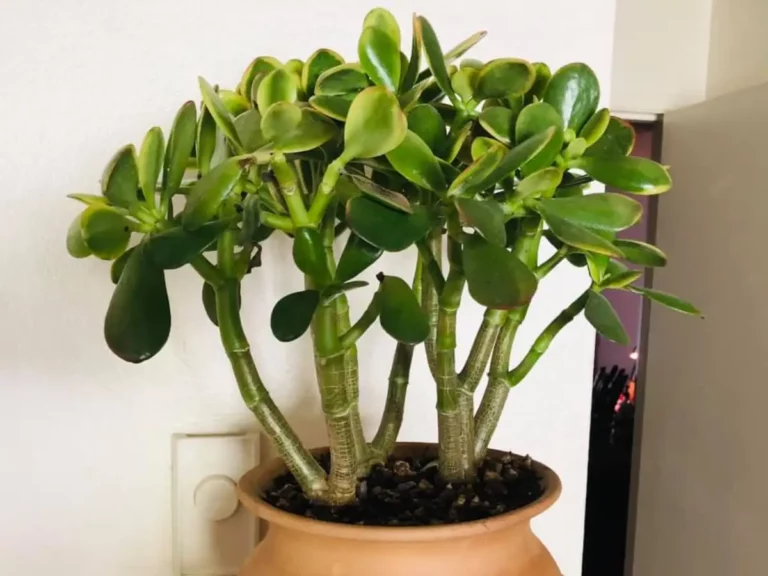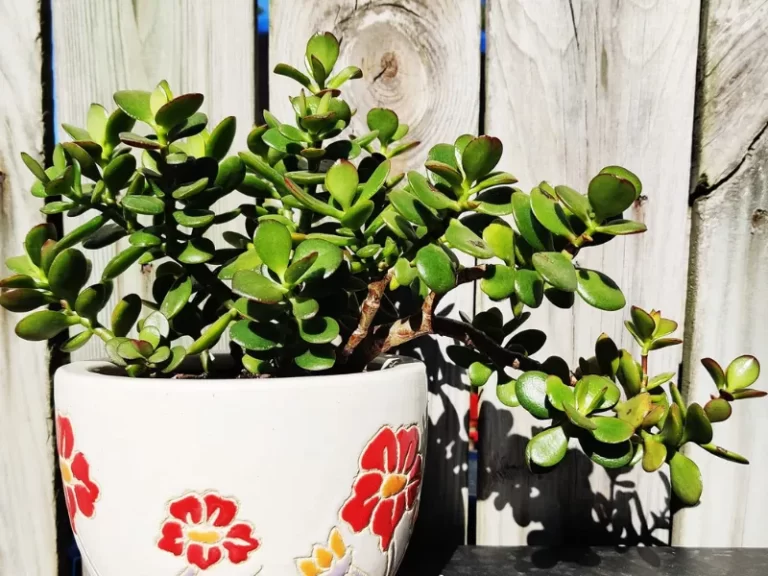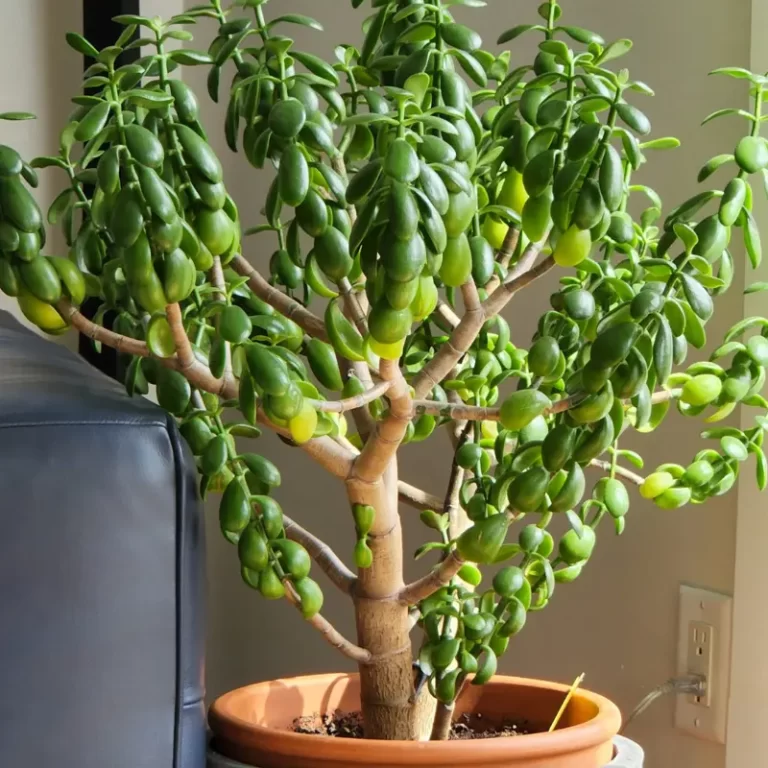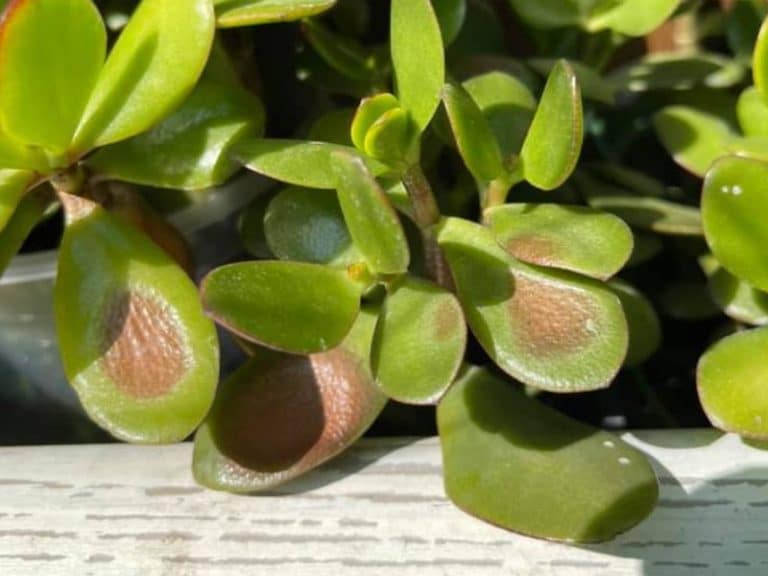Shriveling and Wrinkled Jade Plant Leaves – Causes + Fixes
Jade plants (Crassula ovata) have been a popular ornamental plant in homes for years for their lustrous, fleshy leaves. However, it’s not uncommon to find jade plants with shriveling leaves that dim the plant’s aesthetic appeal. It is natural. Also, it is fixable once you identify the causes.
Water is the main culprit behind your jade plants’ shriveled and wrinkled leaves. A severely underwatered or overwatered jade plant will shrivel and wrinkle up. Fix the plant by improving the watering schedule and fixing any drainage problems.
Why are the leaves of my jade plant shriveling?

If you notice that the leaves of your jade plant appear wrinkled or shriveled, accompanied by stems thinning out, explore the following reasons.
| Reason for wrinkling leaves | Best fix |
| Underwatering | Increase the watering frequency. |
| Overwatering | Reduce watering, remove any affected roots, and replace the potting soil mix. |
| Peat-based soil mix that’s completely dry | Replace the potting soil mix. |
| Overexposure to direct sunlight | Relocate the jade plant to shade. |
| Air currents from wind or air conditioning systems | Keep the jade plant away from air drafts |
Underwatering
The most common cause of wrinkles on jade plant foliage is underwatering. It occurs when the plant is watered infrequently or too lightly during watering sessions. The resultant drought stress causes the plant to use the moisture reserves in the plant’s leaves. The leaves end up shriveled.
Despite being a plant with good drought tolerance, never let your jade plant go more than two weeks without water during the active growing season or more than a month in the winter.
Meanwhile, foliage wrinkling caused by light watering occurs when you don’t water past the first inch of topsoil. As such, the water cannot reach the jade plant’s root zone, causing drought stress.
Overwatering
Overwatering a jade plant chokes out the plant’s roots. Also, it leaves the roots highly prone to root rot. Consequently, the dying roots cannot efficiently absorb water, forcing the plant to use up the water reserves in the leaves and stems.
Overwatering also occurs if the potting soil mix is not well-draining and tends to be waterlogged.
Dry, peat-based potting soil mix
Jade plants are native to southern Africa, where the soil typically dries out in the hot climate. As such, jade prefers the soil to dry out between irrigation sessions.
However, most potting soil mixes used for ornamentals like jade plants contain peat. Despite not being a problem when moist, peat repels water when completely dry instead of absorbing it.
Due to the hydrophobic peat soil, water is pushed to the surface and runs off through the sides of the pot and down to the drainage holes without getting close to the plant’s root zone. The repelled runoff water on the surface of the soil mix gives the false impression of a well-watered jade plant.
On the contrary, the plant is already suffering from drought stress.
Excessive sunlight
Jade plant leaves may shrivel from overexposure to the sun’s rays. While this accent plant can tolerate up to six hours of direct sunlight, prolonged periods of scorching heat may cause the foliage to shrivel. This is especially common for Jade plants placed in direct sunlight during the afternoon hours when the sun is hottest and directly overhead.
More water evaporates from the leaves and the soil as long as the plant stays in the sun, culminating in drought stress and shriveled leaves. It’s also more common for sunlight to cause drought stress in jade plants planted in smaller pots, as these conduct heat much faster.
Air conditioning system or strong wind
Fast streams of dry air coming from wind and air conditioning systems usually draw moisture from the leaves of jade plants. The resultant effect is thinner, wrinkled foliage. Drafts can also affect jade plants when they’re placed close to heating vents.
Why are jade plant leaves soft and wrinkled?
Jade plant leaves become soft and wrinkled due to moisture stress. This succulent stores water in the leaves, giving them a stiff, fleshy appearance. A variety of factors causes moisture to be drawn out of the leaves, causing them to lose their fleshy and lustrous appearance. The loss of moisture also causes the leaves to lose their stiffness and become soft.
What should healthy jade plant leaves look like?
You can tell that your jade plant is healthy if it has thick limbs and fleshy foliage. Therefore, shriveling and wrinkled leaves are indicators of poor jade plant health.
How to Fix Wrinkling Jade Plant Leaves
You can revive a jade plant from the brink of total dry out. All it takes is good water management and better maintenance.
To fix wrinkling jade plant leaves, consider the following:
- Troubleshoot to establish the cause of the problem
- Adopt a balanced watering schedule
- Replace the potting soil mix
- Relocate the jade plant
- Keep the jade plant away from drafty spots.
1. Troubleshoot to establish the cause
Troubleshooting to establish the main cause of your jade plant shriveling saves you time and resources.
You can differentiate underwatering from overwatering by examining the plant’s roots.
In an overwatered jade plant, the roots will be rotten and smelly, and the soil will be waterlogged, while in an underwatered jade plant, the roots will appear fine, and the soil will be completely dry. Meanwhile, jade plant leaves suffering from overexposure to the sun will have a reddish tint or appear scorched in extreme cases.
2. Adopt a balanced watering schedule
The best fix for jade plants whose leaves are shriveling due to underwatering is to increase the watering frequency. Deep watering once every two weeks is recommended in the spring and summer when the plant is actively growing. Meanwhile, watering once every 3-4 weeks should suffice in the winter when growth is minimal.
The above schedule provides the perfect moisture balance to keep jade plants from suffering moisture stress at any time of the year. It also helps to prevent overwatering, another common cause of wrinkled jade plant leaves. If overwatering is the cause of the foliage wrinkles, water the jade plant less frequently.
3. Replace the potting soil mix
If dry peat is repelling water away from the root zone of your jade plant and causing the leaves to shrivel, the best treatment is to replace the soil mix. However, you first need to give the plant a good soak to loosen the soil around the root ball.
Place the potted jade plant inside a water-filled basin for up to 10 minutes. Let the potting soil only partially dry out. You don’t want the peat soil to become hard-baked again.
Next, uproot and replant the jade plant inside a succulent soil mix. The soil mix usually retains a porous structure that allows water through even when completely dry. Ensure you remove the root ball soil you’d loosened up earlier.
Replacing the potting soil also applies to jade plants that have been overwatered. However, in this case, the solution will only work if the roots unaffected by root rot are enough to keep the plant alive. As in the previous case, replant the jade plant in a well-draining potting soil mix for succulents/cacti.
4. Relocate the jade plant
If the wrinkling of the leaves is caused by excessive sunlight, the best fix is to relocate the jade plant to a less harsh environment. This entails moving it to an area where it receives bright but indirect sunlight for up to six hours daily.
You can also keep the plant in direct sunlight during the morning, before moving it indoors or to a shaded spot as afternoon approaches.
5. Keep the jade plant away from air drafts
For jade plants whose leaves are wrinkled due to streams of air sapping moisture from the plant, the best remedy is to relocate the plant. Ensure the succulent isn’t placed close to air conditioners or heating vents.
Also, ensure the plant isn’t placed too close to drafty doors and windows, as this may trigger the same problem.
References
- Clemson Cooperative Extension- Home and Garden Information Center: Jade Plant Fact Sheet







